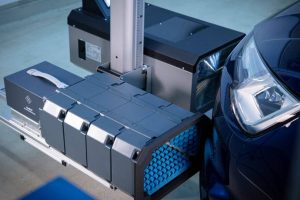
He explained that the increasing complexity of products being tested means users have to fundamentally make changes in their test because today’s products are software defined and have embedded AI and machine learning (ML). “Our customers are asking for a paradigm shift and we believe that intelligent test and AI is the solution,” he told Electronics Weekly.
“When we talk about AI, we are talking a combination of generative AI and machine learning,” said Shultz. “”From the instrument intelligence perspective, we’re doing a lot of work now to put more intelligence in the instrument and even further, at the edge – at the point of measurement. A lot of that is machine learning.”
Making decisions in real time – or instrument intelligence – brings a lot of opportunities to lower the test time and move only the data that the customer wants to move. He cites the example of some RF products sampling at 20Gsample/s. “You can’t move all that data up to the cloud. The quicker you can make decisions, not just from a signal processing side, you can lower test times.”
LabView AI can parse data and specs to present what generative AI found in a test. The engineer can adjust selected specs and prove the results in a step-by-step process, explained Shultz. He used the analogy of a PC finding files, listing the most relevant except generative AI looks inside the files and scores them according to relevance. One example he gave is to reduce two days work to 15 minutes. “Now, I’m not saying we get 60x faster but it does show that a lots of these steps can be quicker and [AI can take on] parts of the job that are considered tedious, for the engineer to focus on where they can add value.” This ‘expert-led’ approach is there to enable the expert but the expert owns the decisions and the steps taken but AI accelerates the development, said Shultz.
LabView AI is currently in beta testing with selected partners. “We are going to be supporting AI across our current hardware products but we will also be adding hardware capabilities to do better data aggregation, to more instrument intelligence,” Shultz confirmed.
The company’s main business sectors are semiconductors, automotive and aerospace/defence. All of these products are growing in complexity; not only software-defined but with AI/ML inside and chips with multiple capabilities. These are giving engineers the biggest [test] challenges, said Shultz, as well as “the most interest in finding out how – fundamentally – to do it differently.”
 Electronics Weekly Electronics Design & Components Tech News
Electronics Weekly Electronics Design & Components Tech News



